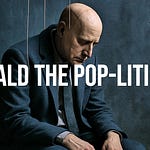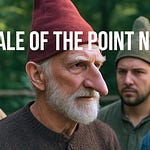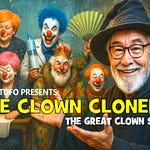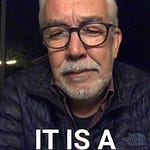The Tale of the Lost People and the Invisible Beast
Once upon a time, in a kingdom both far and near, the people lived without fear. They danced in the sun, shared bread beneath trees, and only knew the word “illness” from their great-grandparents’ bedtime stories.
That is, until one fateful day, when a creature woke in the depths of the wild woods.
No one saw it. No one heard it. And yet, people began to sneeze and cough, grow feverish and faint. The kingdom’s wise ones—cloaked in robes of white and crowned with the knowledge of plants and stars—gathered in the Tower of Truth. They gave the creature a name: The Virus, an invisible beast that moved from breath to breath, from bat to child, from doorknob to hand.
But not everyone trusted the White Wise Ones.
High in the mountains, far from town squares and scrolls of science, lived a man with a silver tongue and eyes like polished stone. He called himself the Seer of Pure Knowing. He spoke to the people:
“Listen well, good folk! This beast you fear is but a phantom. It is not real. What you feel is simply the echo of your own mind. The sickness lives not outside you—but within, created by your thoughts.”
And many believed him.
They cast away their mirrors, burned their herbs, and vowed: “We shall never again fear things we cannot see.”
But the beast was real.
It danced through kisses and hugs, through the hands that gripped handles and hearts alike. It changed its shape, its scent, its stride. It passed from deer to man, from mother to child, like a whisper on the wind.
The skies grew heavy. The healers’ halls overflowed. And as the beast crept silently onward, it drank power from the people’s doubt.
The White Wise Ones wept.
“Why,” they asked the stars, “do they trust whispers over wisdom? Why choose denial over protection?”
But the Seer in his tower smiled.
“Belief is more dangerous than ignorance,” he said. “And doubt is the gate to freedom.”
Thus, the kingdom split in two.
On one side: those who believed the beast was real, who wore silk masks and guarded their bodies with enchanted needles and sacred soaps.
On the other: those who scoffed at the creature’s name, who laughed at the warnings and claimed, “This is but a spell of fear, cast by merchants and kings to keep us indoors.”
And the truth? It walked quietly through the forest, unseen, like the beast itself.
Then one day, a child—born of a doubtful mother and a trusting father—stepped outside, holding a single flower, and said:
“Perhaps the beast is real and comes from within. Perhaps protection is not fear, and freedom is not blindness. Perhaps… we need to listen to one another.”
The Wise Ones fell silent. The Seer gazed skyward.
And the beast, perched on a branch nearby, heard the child’s voice… and vanished into the breeze.











